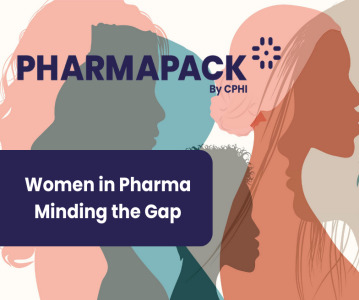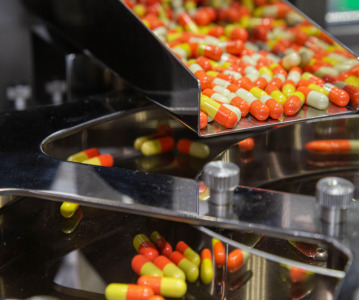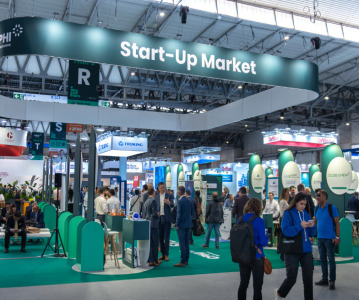New finished product manufacturing hub in the Middle East

Forgotten markets of Africa and Arabia to see increased growth fuelled by international and domestic partnerships and imported APIs.
A new report by CPHI forecasts sizable changes ahead for the pharma markets in the Middle East and Africa over the next few years. It highlights recent regulatory changes, coupled with increased geopolitical stability and rising generics consumption as key drivers in transforming the prospects of pharma manufacturers in the region.
The CPHI Middle East and Africa report – released ahead of the inaugural edition of CPHI MEA (3-5 September 2018, Abu Dhabi) – has identified significant opportunities for a region that is often overlooked by much of international pharma. The event will attract leaders and key decision makers of the pharma industry from the Middle East and Africa, bringing the expertise and reach of the CPHI brand to the heart of this new pharma hub. Running alongside the exhibition, there will be content sessions on the latest trends, keynote addresses, and numerous networking opportunities.
“Our report shows that there two types of market in the region, and both are likely to grow extremely quickly in the near term. The high-income economies offer excellent opportunities for innovative and branded medicines, whilst the free trade agreement between the GCC (Gulf Cooperation Council) nations will undoubtedly increase generics consumption. In addition, high growth economies in Africa (notably Nigeria, Ghana and South Africa) also look a good bet for rapid generics growth over the next 5 years [with compound annual growth rates of around 10% each],” said Cara Turner, Brand Manager, CPHI Middle East & Africa at UBM.
Manufacturers in India look very well placed to capitalise thanks to the recent free trade deal with the GCC – a multinational partnership consisting of Bahrain, Oman, Saudi Arabia, Kuwait, the UAE and Qatar – which has significantly reduced trade barriers. Additionally, the GCC has also set in place a drug price harmonisation strategy to standardise drug prices within the region. The net result is an overall decrease in pricing across the region with generics consumption rising quickly. Reductions across multiple therapeutic areas are to be expected, and the process could even potentially impact drug prices of other non-GCC markets that refer to GCC prices.
However, due the purchasing power and a cultural distrust of cheaper foreign products in the short term, it is more likely that Indian and other API manufacturers will be the largest beneficiary, with local companies providing the final product manufacturing.
CPHI Middle East & Africa 2018 comes with the backing of regional government and pharma associations, and is expected to attract 200 local, regional and international exhibitors from 30 countries and 4,000 attendees.
The report notes that, with a stabilised political situation and gentrifying populations, there are sizable opportunities for manufacturers and CMOs in North Africa to potentially become licensed manufacturers of products. This will enable international companies to penetrate the regional market whilst reducing risk. Stringent registration and packaging requirements also increase the likelihood of local international partnerships rather than the direct import of generics.
In Saudi Arabia, the government is actively trying to increase generic consumption through regulating imported branded drugs and promoting local generics production. In response, the report notes that it may be beneficial for local generic manufacturers (and international firms) to either undergo acquisitions and mergers to protect their market share, or partner with branded internationals to diversify their product mix.
One final trend, is that in light of the new opportunities, foreign direct investment by large pharma and generics companies is increasing with the goal of acquiring local manufacturing facilities – Sanofi’s recent entry in Saudi Arabia is just one notable example.
Cara added: “international companies looking at the opportunities that abound in this region must appreciate cultural business norms. Our feedback from the market says that no matter how large a company or positive its international repute, there is definitely a great deal of importance placed in building personal relationships with potential business partners. It’s also one of the reasons we have introduced Live Pharma Connect, a Match & Meet service, as well as a new Hosted Buyer Programme at the event to help build these new networks.”
However, the report authors conclude it is by no means a simple task for internationals to enter this market. This is due to a variety of drag factors, such as vastly differing spending powers amongst its constituent nations, the lack of a centralised pharmaceutical regulator, and varying preferences for branded products versus generics. In order to achieve success, entry into the MENA market must be thoroughly planned and local insight sought.
Related News
-
News Pharmapack Awards 2024 Patient-Centric Design Award Winner – Dr Ferrer BioPharma
The 2024 Pharmapack Awards celebrated the best in innovation and design for the pharmaceutical packaging and drug delivery industry on January 24, 2024. -
News Women in Pharma: Minding the Gap at Pharmapack 2024
2024 marks the first year Pharmapack will host a Diversity track dedicated to bridging the gap within the pharmaceutical packaging and drug delivery sector. The track includes a panel discussion on 'Enabling Diversity in the Workplace,' focused... -
News Pharmapack Awards 2024 - Celebrating Packaging and Drug Delivery Innovation
The 2024 Pharmapack Innovation Awards ceremony celebrated the best in pharmaceutical packaging and drug delivery innovation at all levels. The awards were held on January 24, 2024 at the Paris Expo Porte de Versailles. -
News Pharmapack 2024 - From the Floor
Paris once again welcomes Europe’s leading trade show in pharmaceutical packaging and drug delivery innovation. Join our content team as Pharmapack 2024 opens its doors to leading experts and innovators in pharmaceutical packaging and drug delive... -
News CPHI Barcelona 2023: Partnering for Success – Managing Outsourcing Relationships to Optimise Manufacturing Operations
During CPHI Barcelona 2023, insightful content sessions offered attendees the chance to explore trending topics with expert speakers and panellists. Here, we summarise what the pharma industry and supply chain are talking about the most. -
News CPHI Barcelona 2023: Loading Potential – Artificial Intelligence for Pharma Manufacturing
During CPHI Barcelona 2023, insightful content sessions offered attendees the chance to explore trending topics with expert speakers and panellists. Here, we summarise what the pharma industry and supply chain are talking about the most. -
News Pharmaceutical industry supports COP28 health stance in joint statement
As COP28 takes place over this week in Dubai, UAE, several bodies in the pharmaceutical and health industries have come together to announce support of key movements in sustainability in the sector, and to recognise sustainability as a health issue.&nb... -
News CPHI Podcast Series: Start-ups take centre stage at CPHI Barcelona
The first episode of the CPHI Podcast Series since we attended CPHI Barcelona in October covers the Start-up market at the event, with expert Matthew Wise joining Editor Lucy Chard to discuss the event.
Position your company at the heart of the global Pharma industry with a CPHI Online membership
-
Your products and solutions visible to thousands of visitors within the largest Pharma marketplace
-
Generate high-quality, engaged leads for your business, all year round
-
Promote your business as the industry’s thought-leader by hosting your reports, brochures and videos within your profile
-
Your company’s profile boosted at all participating CPHI events
-
An easy-to-use platform with a detailed dashboard showing your leads and performance





.png)

